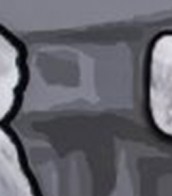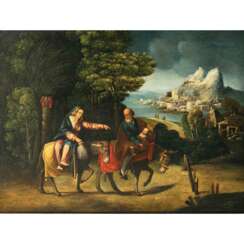lin felton

Lin Felton, known as QUIK, is an American graffiti artist living and working in Brooklyn, New York.
At the age of ten, he was already painting on subway trains, marking the "Star 10" as he called himself at first. Two years later, he took the pseudonym QUIK, under which he later became internationally known. In the early 1980s, he was attending PRATT Institute and Parsons School of Design when he was discovered by a prominent Dutch art dealer.
Felton has developed recognizable satirical comic imagery that he extends far beyond simple taglines, introducing both social and personal issues into his paintings. The theme of racial inequality in American society became prevalent in his work, combined with cynical juxtapositions of popular cartoon characters, pin-up girls, and writing on walls.
Although today Felton's work can be seen in numerous galleries and museums in the United States, Japan, Europe and Hong Kong, his real passion remained on walls and on trains, which even landed him in jail several times.


Lin Felton, known as QUIK, is an American graffiti artist living and working in Brooklyn, New York.
At the age of ten, he was already painting on subway trains, marking the "Star 10" as he called himself at first. Two years later, he took the pseudonym QUIK, under which he later became internationally known. In the early 1980s, he was attending PRATT Institute and Parsons School of Design when he was discovered by a prominent Dutch art dealer.
Felton has developed recognizable satirical comic imagery that he extends far beyond simple taglines, introducing both social and personal issues into his paintings. The theme of racial inequality in American society became prevalent in his work, combined with cynical juxtapositions of popular cartoon characters, pin-up girls, and writing on walls.
Although today Felton's work can be seen in numerous galleries and museums in the United States, Japan, Europe and Hong Kong, his real passion remained on walls and on trains, which even landed him in jail several times.


Lin Felton, known as QUIK, is an American graffiti artist living and working in Brooklyn, New York.
At the age of ten, he was already painting on subway trains, marking the "Star 10" as he called himself at first. Two years later, he took the pseudonym QUIK, under which he later became internationally known. In the early 1980s, he was attending PRATT Institute and Parsons School of Design when he was discovered by a prominent Dutch art dealer.
Felton has developed recognizable satirical comic imagery that he extends far beyond simple taglines, introducing both social and personal issues into his paintings. The theme of racial inequality in American society became prevalent in his work, combined with cynical juxtapositions of popular cartoon characters, pin-up girls, and writing on walls.
Although today Felton's work can be seen in numerous galleries and museums in the United States, Japan, Europe and Hong Kong, his real passion remained on walls and on trains, which even landed him in jail several times.


Nathaniel Hawthorne is an American writer and author.
Hawthorne is a recognized short story writer and a master of allegorical and symbolic narrative. One of the first fiction writers in American literature, he is best known for his works The Scarlet Letter (1850) and The House of Seven Gables (1851). Hawthorne's artistic works are considered part of the American Romantic movement and, in particular, of so-called dark Romanticism, a popular mid-19th-century fascination with the irrational, the demonic, and the grotesque.


Master of the Rouen Échevinage was a French artist, one of the leading 15th-century Rouen illustrators, named after the magnificent manuscripts he painted for the Bibliothèque des Echevins in Rouen. He was active between the 1450s and 1480s.


Jonathan Swift was a British-Irish writer, essayist, philosopher, and author of the world-famous satirical novel Gulliver's Travels.
Swift also wrote numerous works, including The Tale of the Barrel (1704), An Argument Against the Abolition of Christianity (1712), and A Modest Proposal (1729). Almost all of Swift's satirical works were published anonymously, giving the author wide latitude in expressing his talent as a satirist.
Swift was a clergyman, made a career in London, became the chief pamphleteer and political writer of the Tories and headed the Tory journal "The Inspector", and then returned to Ireland, where he created his major life's work.
The four-part novel Gulliver's Travels, Jonathan Swift's greatest satire, was first published in 1726 and has since been reprinted hundreds of times in many languages around the world. The author describes in an engaging style the different races and societies that Gulliver encounters on his travels to ridicule the many errors, follies, weaknesses and vices to which people and society at large are subject. The author's boundless imagination, bitter irony, keen intellect and brilliant language give this work a world-class scope.





























![BINDER OF WOMEN, INCLUDING HILARY PECIS (B. 1979) [Ten Works]](/assets/image/picture_2036455/5c9fc/9c096de5ba2b8b88c64f8f9ce1d0e2eb1646866800jpg__fix_374_244.jpeg)
![BINDER OF WOMEN, INCLUDING HILARY PECIS (B. 1979) [Ten Works]](https://veryimportantlot.com/assets/image/picture_2036455/5c9fc/9c096de5ba2b8b88c64f8f9ce1d0e2eb1646866800jpg__fix_374_244.jpeg)







